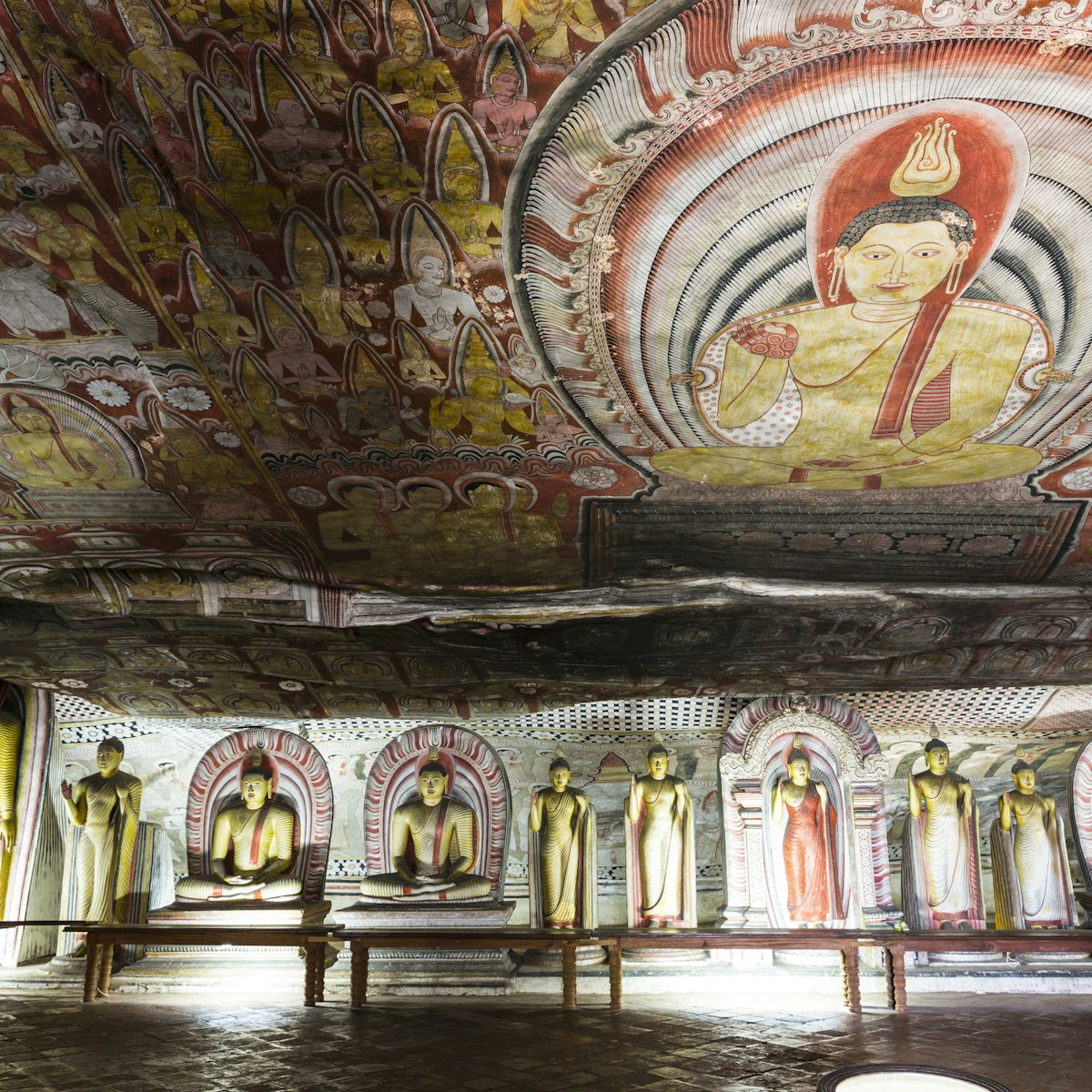Halfway up the Sigiriya rock an open-air spiral stairway leads to a long, sheltered gallery in the sheer rock face. The paintings of the buxom, wasp-waisted women are popularly believed to represent either apsaras (celestial nymphs) or King Kasyapa’s concubines. Protected from the sun in the sheltered gallery, the frescoes remain in remarkably good condition, their colours still glowing.
Modern theory suggests the female forms represent aspects of Tara – a bodhisattva and one of the most important figures in Tantric Buddhism. They are similar in style to the rock paintings at Ajanta in India, but have a specific character in their classical realist style. No one knows the exact dates of the impressive frescoes, though it’s unlikely they date as far back as the 5th century (when King Kasyapa reigned).
The paintings are at their best in the late-afternoon light. Photos are not allowed.






